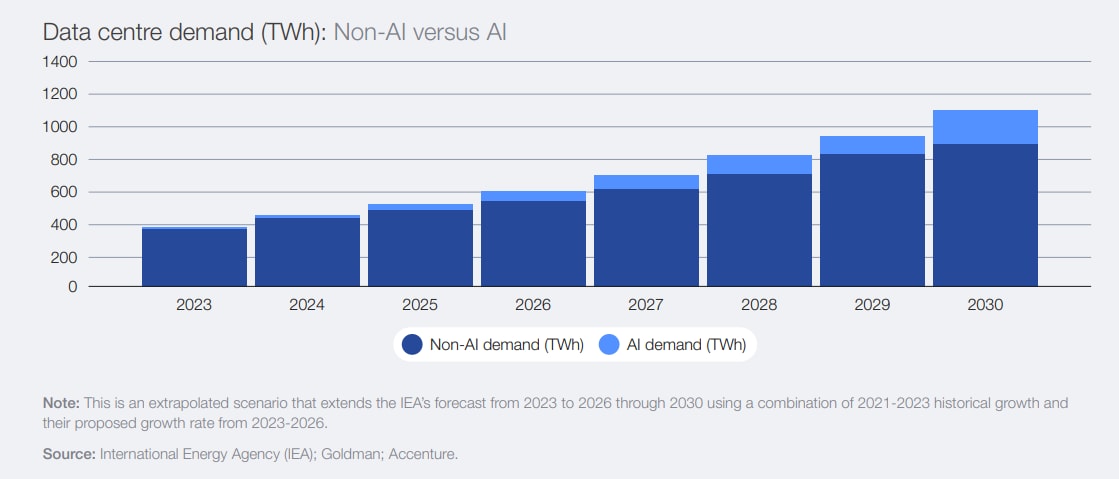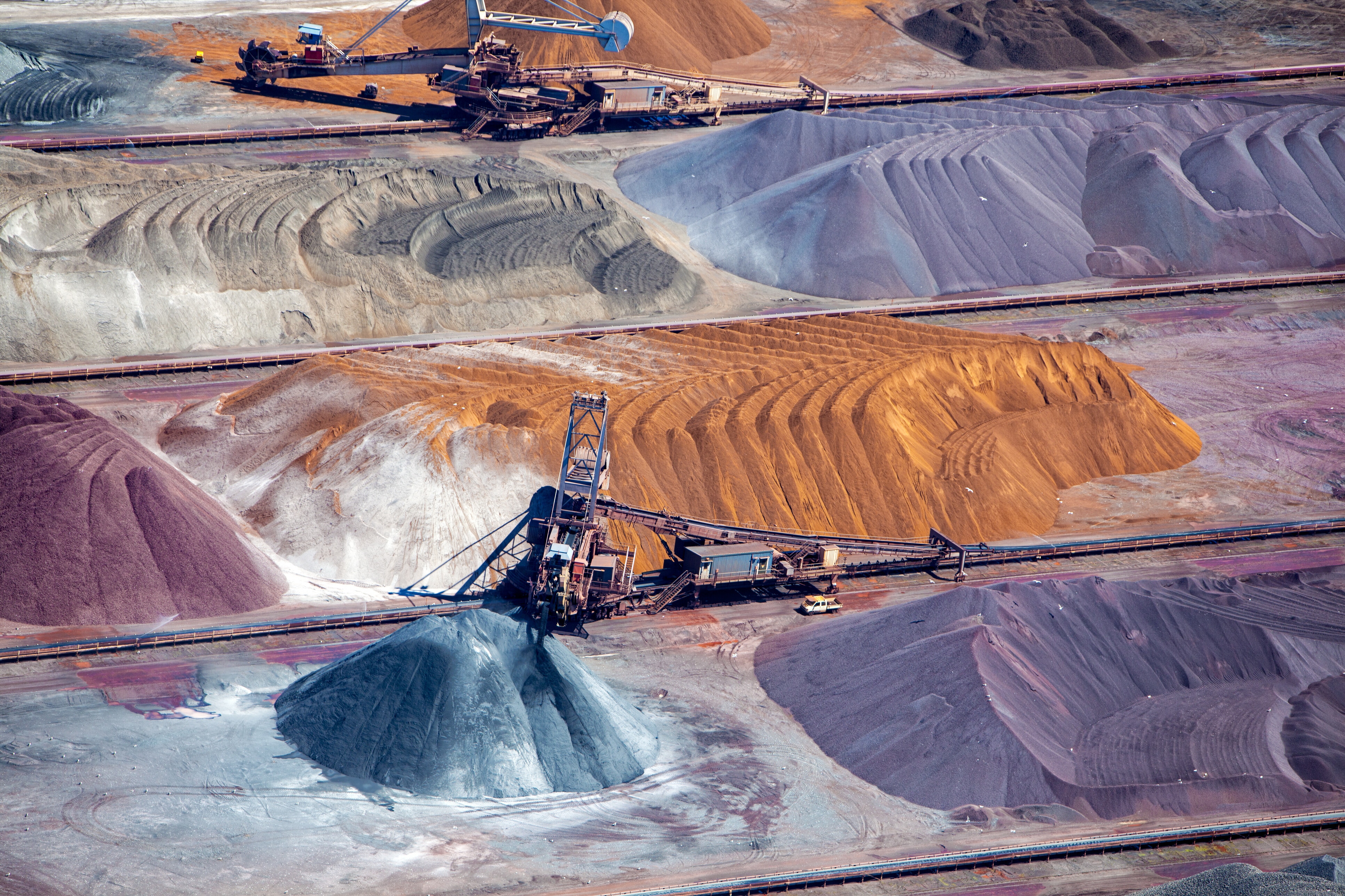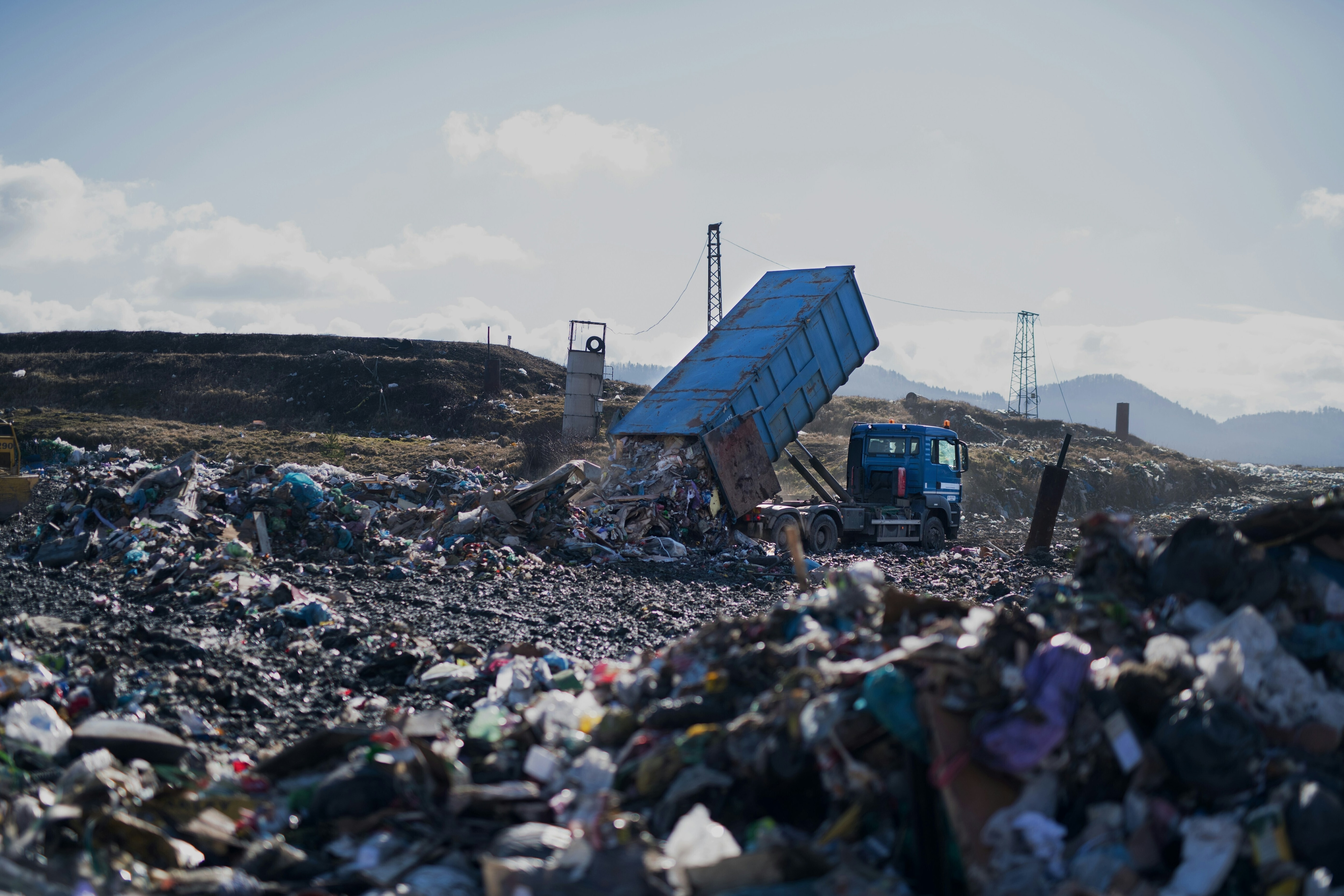Here's how data centre heat can warm your home

Data centre waste heat can be channelled to homes in the local area. Image: REUTERS/Sergio Perez
Listen to the article
- Data centres, the essential backbone of our increasingly generative AI world, consume vast amounts of electricity and produce significant amounts of heat.
- Countries, especially in Europe, are pioneering the reuse of this waste heat to power homes and businesses in the local area.
- While redirecting data centre heat is not a complete solution, it's a crucial step in balancing AI’s benefits with its climate impact, says the World Economic Forum in its white paper, Artificial Intelligence’s Energy Paradox.
Each time you ask ChatGPT – or any other generative AI chatbot – a question, its server is consuming 0.14 kilowatt-hours of electricity to answer that query, the equivalent of powering 14 LED light bulbs for an hour. And that question and answer is yet more digital data to be stored.
As of 2024, the world had created 149 zettabytes of data. By 2028, global data creation is expected to reach almost 400 zettabytes. If you consider that 1 zettabyte is 1,000,000,000,000,000,000,000 (or 1 sextillion) bytes of storage capacity, it gives you some idea of the vastness of this growing data mountain.
Data centres are scrambling to keep up. And keep cool. The constant pull on energy means the servers get ever hotter and require water systems to prevent overheating. A Washington Post study last year found that generating a 100-word email requires an Evian bottle’s worth of water to maintain a workable temperature.
None of which ticks the sustainability box. But countries and organizations are finding ways to turn these energy guzzlers into more environmentally friendly fixtures. One way is channelling the heat generated from data centres into local homes and businesses.

Making use of data centre heat
With this approach, the excess data centre heat is converted to district heating, essentially a system of insulated pipes leading from the data centre and distributed across multiple buildings in the local area.
As the chart above shows, the United States has by far the most data centres in the world. So many, in fact, the US Energy Information Administration recently announced that these facilities will push the country’s electricity consumption to record highs this year and next. The US is not, however, at the forefront of waste heat adoption. Europe, and particularly the Nordic countries, are instead blazing a trail.
In Sweden, an initiative called Stockholm Data Parks runs in partnership with political and industry leaders to warm people's homes using waste heat generated by the city’s data centres. The goal is to run a data centre industry where no heat is wasted at all. In neighbouring Finland, Nebius has established a sustainable data centre in Mäntsälä, which recovers around 20,000 MWh of energy annually, enough to heat the equivalent of 2,500 Finnish homes.
About an hour’s drive away, near Helsinki, Microsoft is busy building an entire "data centre region" which, the company says, “will be the world’s largest scheme to recycle waste heat from data centres”; once completed, it’s expected to heat Finland’s second-largest city, Espoo, as well two other neighbouring municipalities.
Elsewhere in Europe, the Tallaght District Heating Scheme in Ireland saved 1,100 tonnes of CO2 in its first year of operation, redirecting waste heat from a nearby Amazon data centre to local buildings. And in the UK, the Mayor of London recently announced plans for a new district heat network in the west of the city, expected to heat over 9,000 homes via local data centres.

The data centre paradox
While redirecting waste heat from data centres is not a panacea, it’s an important step for countries to be taking with the genAI genie firmly out of the bottle. In one future scenario, the International Energy Agency projects data centres will consume 3% of global electricity demand by 2030, so the challenge is on to balance the benefits of AI with the knock-on effects on the climate.
It's a topic investigated in the World Economic Forum’s recent white paper, Artificial Intelligence’s Energy Paradox, which acknowledges that AI systems “offer both challenges and opportunities”.
How the Forum helps leaders make sense of AI and collaborate on responsible innovation
The white paper outlines key partnerships, frameworks and policies to support sustainable AI adoption and identifies four areas to monitor:
- AI deployment for decarbonization
- Transparent and efficient AI electricity use
- Innovation in technology and design
- Effective ecosystem collaboration.
It also breaks down how data centres consume electricity, with IT equipment responsible for 40-50% of power needs, cooling systems taking 30-40% and auxiliary components like security and lighting requiring 10-30%. Creating more energy-efficient data centres involves a variety of strategies, the white paper says, with heat reuse just one of them.
As an example of a successful cross-partnership, it references Google’s Hamina data centre in Finland, which provides 80% of the annual heat demand of the local district heating network, the company says.
And while data centres may be contributing to the climate crisis, they can also be a solution. “AI can play a pivotal role in the energy transition by optimizing assets, driving innovation and enabling sustainable technologies,” says the report. “AI is already being used to optimize energy consumption, enable predictive maintenance and enhance efficiency throughout the energy value chain.”
Don't miss any update on this topic
Create a free account and access your personalized content collection with our latest publications and analyses.
License and Republishing
World Economic Forum articles may be republished in accordance with the Creative Commons Attribution-NonCommercial-NoDerivatives 4.0 International Public License, and in accordance with our Terms of Use.
The views expressed in this article are those of the author alone and not the World Economic Forum.
Stay up to date:
Data Science
Related topics:
Forum Stories newsletter
Bringing you weekly curated insights and analysis on the global issues that matter.
More on Circular EconomySee all
Yun B. Choi and Kim Kijune
January 7, 2026







